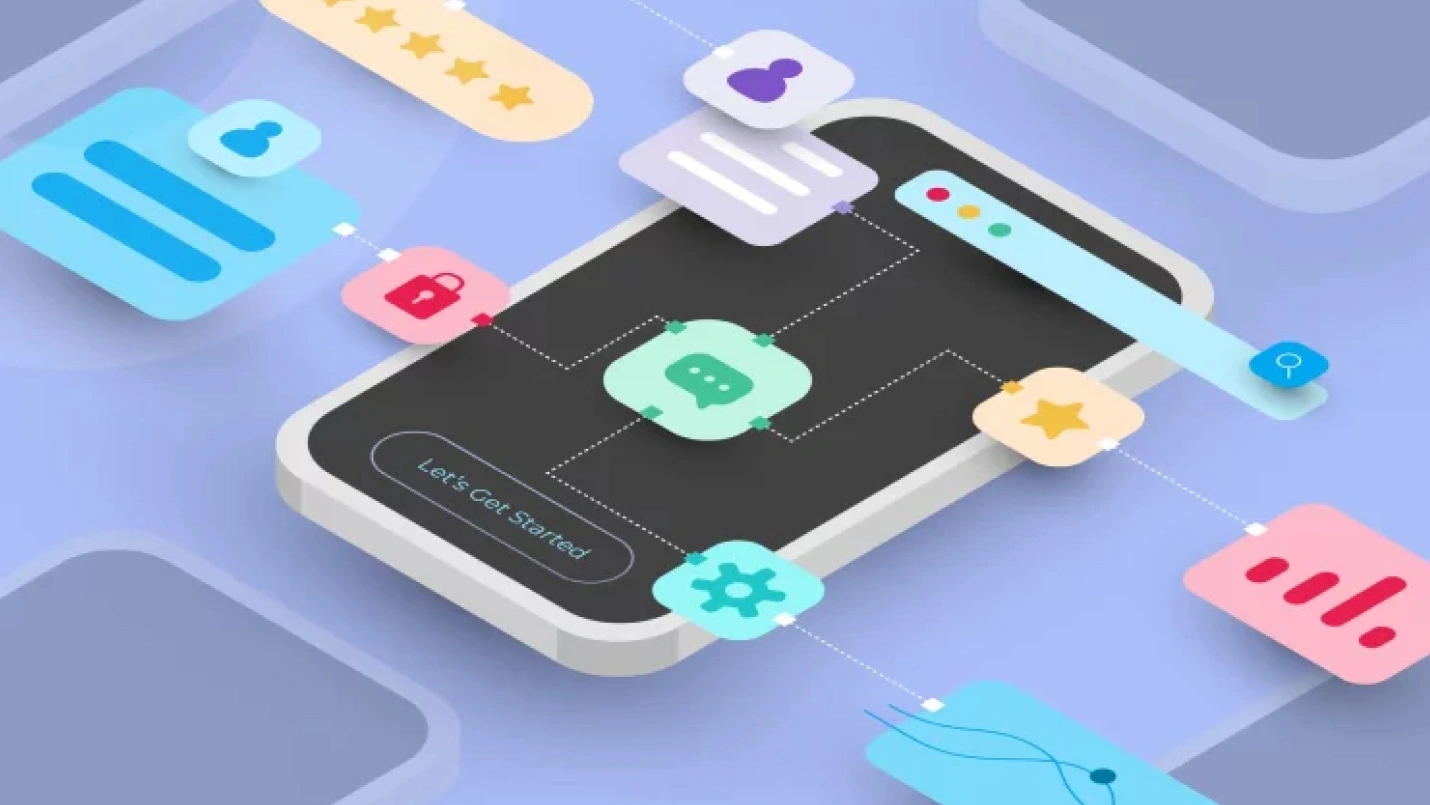Selecting an outsourcing partner to create your mobile applications is no mean task. How do you know you’re making the right choices? In this blog, you’ll learn about the essential components of an RFP, the benefits of formulating a clear RFP and a step-by-step guide on how to make one.
If you’re looking for a competent outsourcing partner to create an Android or iOS mobile app, you may feel overwhelmed in the beginning when you review your options. There are plenty of software development and design partners to choose from, so how do you balance things like budgets, timeframes, and risks, while working to serve your overall business goals?
A Request for Proposal (RFP) is an excellent way to assess your options and identify the ideal for your next mobile app project. Since every prospective vendor will answer the same questions on your RFP, it will give you a side-by-side comparison of every offer, allowing you to make a sound decision.
This blog post will cover all the elements that every mobile app RFP should include, from your business model and the scope of your project to key questions about the proposed budget, project timeline, deliverables—and everything in between!
We’ll also take you through the step-by-step process of writing and distributing your RFP, along with evaluating your proposals and selecting the best.
What Is a Mobile App RFP?
A mobile app RFP is a document that you will send to all prospective development partners asking them to outline all the relevant information about their service so you can make an informed decision.
An effective RFP will include key factors like your budget, timeline, project scope, and a vivid description of your project. It will also request key data you need from your vendors, all of which we’ll discuss below.
RFP vs. RFI vs. RFQ
The terms Request for Proposal (RFP), Request for Information (RFI), and Request for Quotation (RFQ) are commonly confused, so let’s clear up any confusion before we go any further.
While companies use all of these documents to evaluate mobile app development companies and other types of vendors, they all serve slightly different purposes. Here is a concise breakdown of each term.

- Request for Proposal (RFP): Companies use an RFP when they are certain about the products or services they want to purchase. For example, someone would use a mobile app development RFP when they already know what kind of app they’re hoping to launch and exactly which services they need (e.g., software development, design, Quality Assurance).
- Request for Information (RFI): Sometimes companies aren’t sure exactly how a vendor’s services can help them. They know they have a business problem they need to solve, but they need more information about potential solutions. That’s where an RFI is helpful.
- Request for Quotation (RFQ): When a company needs to conduct a price comparison between potential vendors, they can send an RFQ to understand each vendor’s pricing model.
Are you clear about what your mobile app project generally requires, along with the scope of the project?
If so, then an RFP can help you choose between the most promising app development vendors you’ve discovered.
Benefits of a Mobile App Request for Proposal
Why go through the effort to create an RFP when searching for app development services?
Writing an effective RFP has a number of benefits, and it will help you find an outsourcing partner who understands your business needs and can deliver real value to your target audience.
- Clearly communicating your business needs: The simple act of writing an RFP will help you further clarify your business needs—helping you understand what you’re investing in and what value you’re expecting in return.
- Risk minimization: Risk, in the software development world, refers to anything that might impact your success, from delays to going over budget. A well-written RFP will help reduce those risks because you can compare proposals and see what different mobile app developers consider realistic deliverables.
- Improving timeline accuracy: By comparing proposed timelines, you eliminate outliers who overpromise a quick delivery as well as those who plan to take their sweet time. Efficiency is a must, of course, but someone who promises you the world needs to back up those promises by demonstrating that they know what they’re doing.
- Understanding the scope of work: Full-service vendors can provide app design and quality assurance in addition to app development services (both frontend and backend). Your RFP will help you understand and communicate your needs so you can find the right match.
- Documenting the Process: Proper documentation is key to every element of designing, building, and marketing an app. Documentation is essentially a map that shows you where you’ve been and helps you predict where you’re going. That comes in handy when creating new versions of your app to better serve your audience down the line.
- Establish Benchmarks to Evaluate Success: What do you hope to accomplish with your mobile app? What is its key functionality? What is your launch date? What are your project requirements? A well-written RFP will include all these elements.
Naturally, the goal of every RFP is to find the ideal vendor for your project. Price is likely a factor, but it shouldn’t be the only factor.
An effective RFP will help you identify a mobile application development company’s strengths, its approach to software creation, and its ability to meet the metrics that matter most to you.
What Should a Mobile App Development RFP Include?
The RFP for your app development project should cover certain key items, and you’ll want to make sure that every potential vendor responds thoroughly.
We recommend including each of the following items in your mobile app RFP.
- Introduction that briefly outlines your business and app development project.
- Statement of purpose that covers the purpose of your web app, along with several use cases (i.e., how your target audience might use your app).
- Background information that explores the origins of the idea, how the app development project supports your current business (if you have an established company), what you know about your target audience, and the problem your app solves for that market segment.
- Scope of work that outlines everything you’re hiring the outsourcing partner to do, from technical requirements to support plans. It will also cover design requirements, Q&A, and any additional work, such as a web-based version of the app or platform if that’s something you require.
- Project budget that identifies a range of how much you’ve set aside to pay for these services.
- Project schedule outlining due dates for every stage in the design and development process.
- RFP timeline identifying the due date by which prospective vendors must reply.
- Outline of your review process so vendors know when to expect a meeting request or a request for more information.
- Outline of terms and conditions summarizing how you plan to work with the vendor and what is expected of them legally.
- Requirements and prerequisites identifying the qualities you need in a potential development partner, such as specific programming skills or design experience.
Step-by-Step Guide: How to Write a Mobile App RFP
The RFP process for creating a mobile app is straightforward and simple if you follow these guidelines. Just as a solid newspaper article addresses the “who, what, when, where, why, and how” of current events, a solid RFP answers the same questions.
Covering all these elements will not only help you find an ideal vendor. It will help you build a mobile app that your clients value—and hopefully you’ll get it in on time and under budget.

1. Executive summary
The Executive summary helps potential vendors understand, at a glance, who you are and what your software project entails.
You don’t need to dive into the weeds here, but briefly explaining what your app will do, what problems it solves, and the big picture of what you’re trying to accomplish makes it easy for vendors to assess your project. This will help ensure they deliver clear answers that guide you in your decision-making process.
Key elements to include
- General description and purpose of the project
- Objectives and expectations
2. Company information
Provide a brief description of your company, its target audiences, and the key stakeholders in the project.
If you’re an entrepreneur and you don’t have an established company yet, discuss the kind of startup you plan to build and what you hope to accomplish with the software solutions you envision.
Key elements to include
- Background of your business
- Target audience(s) and the problem(s) you solve for them
- Industry, specialties, and unique selling points
- Names and positions of leadership, project stakeholders, and the project lead
3. Project summary
This is where you dive into the project details. Your level of granularity will depend on a number of factors, including your familiarity with design and development.
For example, one company might include basic wireframes, list programming languages required, etc., while a startup with just a general idea of the product might not have all that information.
Whatever the case, be sure to provide a reasonably thorough description of what your app intends to accomplish and who you’re designing it for.
You’ll also need to clearly describe your objectives, goals, metrics for success, and any potential risks you envision. Lastly, be sure to outline your selection criteria. How will you choose your vendor? What matters most to you—budget, speed, previous experience working in similar industries, or something else?
In order to select the very best app development partner, you need to tell them what you’re looking for and give them a chance to demonstrate how their skill set matches your needs.
Key elements to include
- Objectives
- Short-term and long-term vision for the app
- Any in-depth information you have about your target audience, including user personas
- Any in-depth information you have about customer challenges
- Risks to success that you’ve identified
- Platforms you intended to serve (e.g., mobile, desktop, iOS, Android)
- Criteria for success (e.g., metrics, current benchmarks)
4. Project scope requirements
Clearly outlining the scope of your project is absolutely vital because it allows prospective vendors to create a realistic budget and timeline surrounding your project. It will also allow development firms that lack expertise in certain areas to disqualify themselves.
A thorough project scope identifies the services you require, the platforms you’re building the app for, and any data analytics solutions you need the vendor to set up.
Key elements to include
- Services required (e.g., project planning, design, development, Q&A)
- Platforms served (e.g., Android, iOS, cross-platform, web apps)
- Analytics you want the partner to install to measure traffic and other data
5. Budget
It’s absolutely vital to set a clear, realistic budget in your RFP. If you’re particularly price sensitive, this will allow more expensive vendors to take themselves out of the race.
As we mentioned earlier, however, cost should not be your only consideration, as dirt-cheap vendors are likely to cut corners and cost you more money down the line—or even sink the project entirely.
Plus, a cheap vendor that fails to build a secure app could open you up to serious legal issues.
Key elements to include
- Budget range
- Any additional information, including how flexible the budget is and how the budget might shift if certain deliverables change
6. Project Timeline
How soon are you hoping to launch your project? Are you aiming for a Minimum Viable Product (MVP) that will serve as your initial introduction to the market? Are there dependencies outside your organization that might affect your anticipated launch date? Is your launch date flexible?
It’s entirely possible that a vendor may suggest a different timeline or modified deliverables based on your desired launch date. Explore any feedback like this and discuss it with your team to decide whether your initial project plan needs some changes.
Key elements to include
- Desired launch date
- External dependencies that might change your plan
- Any flexibility in terms of modifying your MVP or changing the start date
7. Proposal Deadline
What is the latest possible date to submit a proposal? Be sure to clearly communicate that information in your RFP, that way you’ll know that all your proposals have been received before you start reviewing your options.
What the Vendor Needs to Include
In addition to the information provided above, you’ll always want to request some key information from each vendor so you can learn more about their services, track record, security protocol, and other vital information.
1. Vendor overview
Any seasoned software development company will have a basic, boilerplate paragraph or two describing their brand, their experience, and their specialties. Take note of what they highlight and whether it matches your needs.
2. Types of services they offer
Software development firms may offer a range of services, including project management, design, software development, Q&A, and more.
When outsourcing any part of your app development project, be sure to select a firm that has experience in all the areas you require.
3. Customer case studies
Any experienced, reputable software development company should have a wide selection of case studies that include a detailed description of what they’ve built for different clients.
Look for testimonials from the key stakeholders in the organizations they served, and make sure the vendor has experience building the feature you’re looking to implement.
4. Information security protocols
What security measures does the company take to keep your client’s data safe? Have them outline their approach to security because, as we mentioned earlier, you can be held liable if your security measures fail due to their negligence.
5. Vendor’s proposal
Having the prospective vendor offer a detailed description of the costs, timeline, services performed, and any other information will help you make a smart decision.
Compare each proposal and weigh different elements based on your needs, such as expertise, experience, cost, timeline, etc.
Mobile App RFP Templates
There are many RFP proposal templates available online. Two popular RFP proposal templates are FormSwift and TemplateLab. That said, there are plenty of sources for RFP templates across the internet, so choose the one that works best for you.
Request for Proposal Process: 4 Simple Steps
Now that you know what to include in a mobile app Request for Proposal, it’s time to strategize your process for creating and issuing your RFP, along with techniques for evaluating the many proposals that will come your way.
1. Plan the project
A solid RFP begins with a carefully considered project plan—one that clearly defines all your requirements and sets all the parameters for your project. This involves discussions with key stakeholders, ensuring the plan aligns with your business objectives, and setting criteria for scoring and selecting vendors.
RFP project planning checklist
- Clearly define your requirements
- Identify how the project aligns with your business plan
- Explore the types of vendors you plan to target (e.g., full-service vs. those only offer a smaller subset of services)
- Establish your project timeline
- Set your budget
- Identify key stakeholders within your organization
- Establish selection criteria, along with a system for scoring proposals
2. Draft the RFP
Writing your RFP requires you to hit all the key points mentioned above, but it doesn’t end there. In order to attract the right development firm for your project, be sure to paint a clear picture of your business needs, your target market, the problem you intend to solve, and what your app will do to improve your users’ lives.
Checklist for your portion of the RFP
- Executive summary
- Company information
- Project Summary
- Project scope requirements
- Budget
- Project Timeline
- Proposal deadline
Items to request from the vendor
- Vendor overview
- Types of services they offer
- Customer case studies
- Information security protocols
- Proposal description
3. Finalize and issue the RFP
Once you’ve got your RFP in order and ready to go, it’s time to select your distribution networks. Once you distribute your RFP, you will receive proposals from software teams around the world, so it’s important to have a system for collecting and sorting each one.
You’ll also want to have a system for channeling any questions the vendors might have to the right stakeholder at your organization.
Checklist for finalizing and issuing your RFP
- Select your distribution networks
- Answer any questions from vendors
- Receive and file submissions
4. Review vendor proposals and award the contract
You will likely receive a large number of proposals, so you’ll want to create clear criteria for narrowing your set of prospective vendors down to a shortlist.
Once you’ve done that, it’s time to implement your scoring system.
Using a weighted criteria matrix of some kind, rank each proposal based on the factors that matter most to you.
Once you’ve identified your top few candidates, schedule appointments and conduct live interviews with them to discover your perfect fit.
Checklist for reviewing proposals:
- Score your proposals
- Choose your top candidates
- Conduct interviews
- Finalize negotiations
- Write and sign contracts
- Let the other shortlisted candidates know once you’ve made a decision
Need a Mobile Application Development Partner?
Net Solutions has designed and developed mobile apps for well-known organizations—such as Harvard Business Review and Euro Car Parts — as well as startups with clever ideas and big dreams.
Frequently Asked Questions
The duration of the RFP process can vary depending on the complexity of the project and the number of vendors involved. Typically, the process may take anywhere from a few weeks to a couple of months.
You must evaluate mobile app RFP proposals based on the following factors:
- The experience and expertise of the development team.
- The company’s track record of success.
- The company’s pricing and terms.
- The company’s communication and collaboration style.
- The company’s commitment to quality.
When reviewing and evaluating RFP responses, consider factors such as:
- Alignment with your project requirements and objectives.
- Demonstrated expertise and experience in mobile app development.
- Proposed approach, methodology, and project timeline.
- Cost and pricing structure.
- References, case studies, and client testimonials.
- Communication and collaboration capabilities.
While you can make minor modifications or clarifications during the evaluation process, significant changes to the RFP may disrupt the evaluation process and fairness to the vendors.




